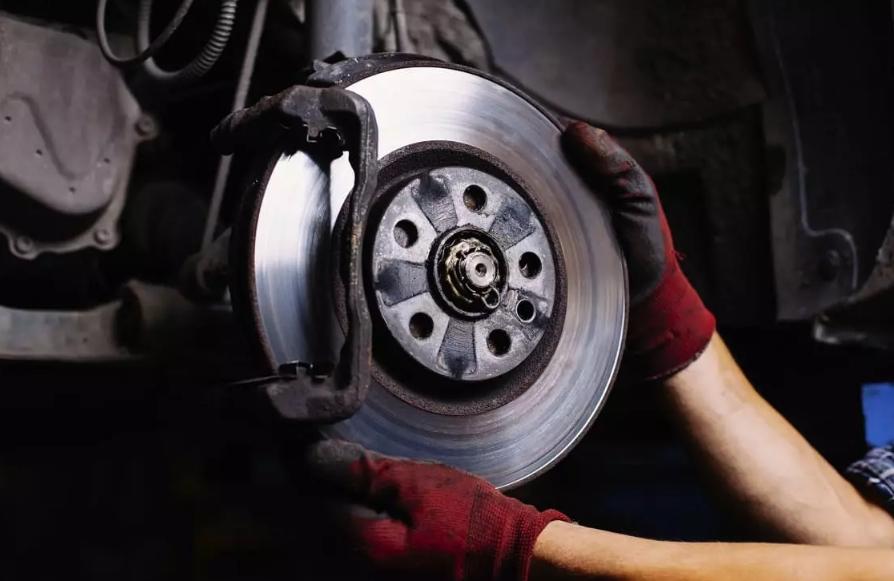
How Long Does It Take to Do Brakes – Complete Information
10.10.2022 by Richard Ford
Contents hide
What is a Brake Pad Replacement
Besides Brake Pads What Other Components Need Replacing
Why Do Brake Pads Need to Be Replaced
Signs That Your Brake Pads Need Replacement
How Long Does Brake Pad Replacement Take
What is the Cost of a Brake Pad Replacement Job
Video: How Long Does It Take to Do Brakes
Tips to Help Your Brake Pads Last Longer
Can you imagine what can happen if key brake system components are not replaced in time? It’s only scary to imagine. Your car’s brakes should be serviced regularly, and it just doesn’t make sense to ignore the process. In our blog, we want to discuss the most important things about replacing your brakes, especially what it takes and how long does it take to do brakes . First of all, we want to focus on replacing the brake pads.
What is a Brake Pad Replacement
Pads are special parts that make it possible for a car to brake. They are in every wheel. They are attached to the disc and clamp it when you apply pressure to the brake.
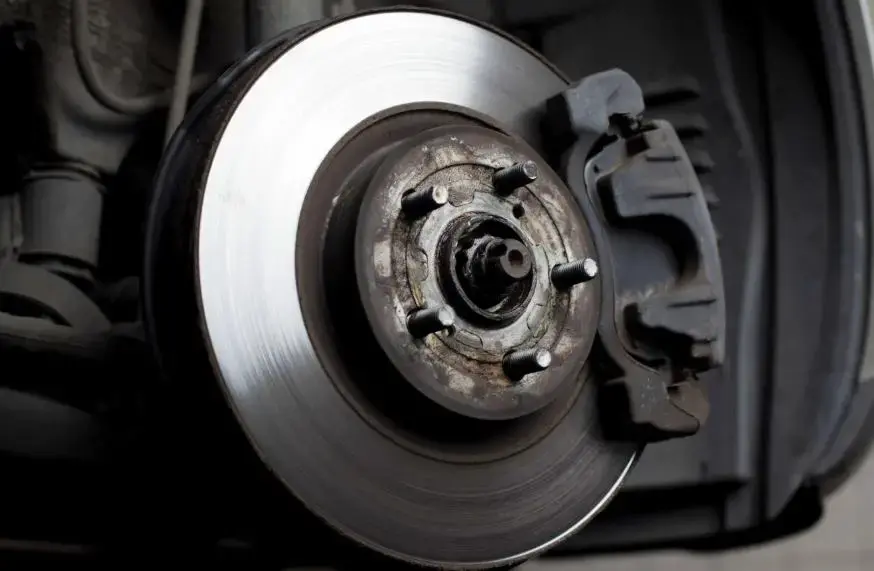
Usually, the pads consist of a metal base, on which a special hard compound is applied. No one knows what kind. Shoe manufacturers keep this information a secret.
The main quality of the pads is their wear resistance. They must withstand all temperatures and loads. But, in spite of this, minimize the impact on the brake discs and wear them out.
Pads come in two types: for disc and drum systems. The first is straight and the second is curved. The former is mounted on the outside, the latter on the inside.
In many cars, only disc system pads are used (drum pads are sometimes installed on the rear wheels).
Besides Brake Pads What Other Components Need Replacing
Let’s see what other components need replacing besides brake pads.
Caliper Piston
The caliper ensures that the braking force is transmitted from the pedal to the pads. In hydraulic brakes, this pressure is transmitted by fluid through the brake cylinders.
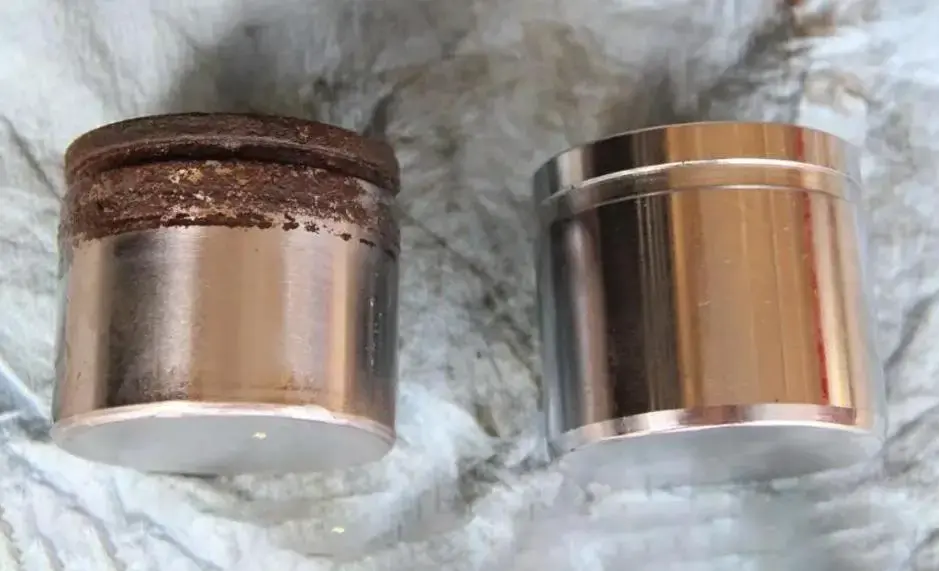
If the caliper is OK, the car responds quickly to the brake pedal : deceleration is easy to dose, the car does not veer off to the side, and fuel consumption is normal.
If the caliper is jammed, the pads are not completely released. This causes them to overheat and burn. And as we already know, the pads will not brake effectively in this condition.
Brake Hoses
Brake hoses connect parts of the braking system that are always moving relative to each other, so they must be flexible but still retain the working volume of the braking system.
Old brake hoses have about the same effect as a steam lock in the brake fluid : the driver presses the pedal – the delaminated hose inflates, causing the pressure in the system to be lower than necessary for effective braking.
READ ALSO ➡
How Long Does An Alignment Take: Basic Steps
Vacuum Booster
To keep the brakes in optimal condition, you need to pay attention to the work of the vacuum booster, and if there are symptoms of malfunction – look for and fix it. In addition, the vacuum booster should be repaired in a specialized workshop or replaced as a complete unit.
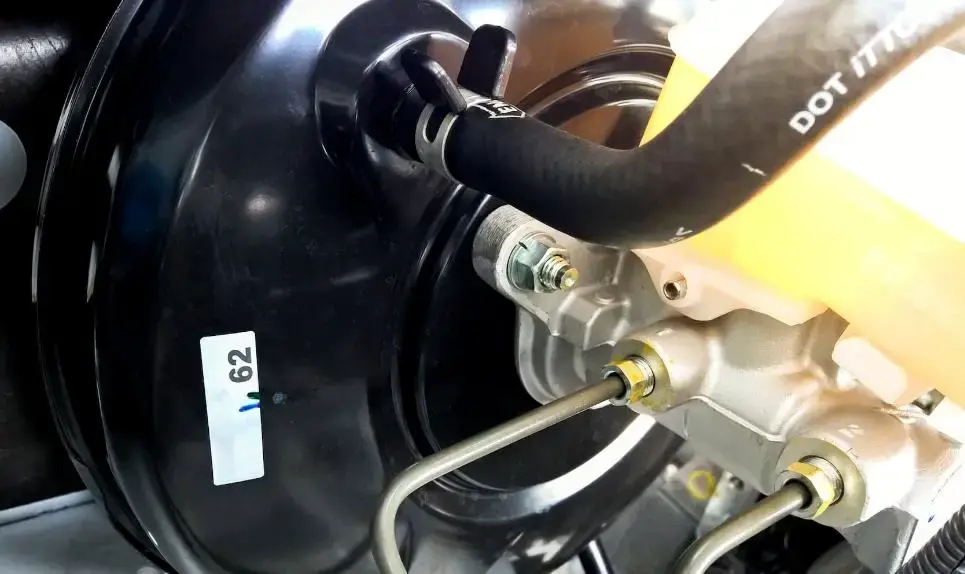
ABS System
Malfunctions in the ABS system may cause its false operation and lead to the blocking of one or several wheels during braking, and this threatens skid and loss of controllability.
One of the vulnerabilities of the system is the speed sensors near the wheel hub. Their operation can be affected, for example, by dirt and metal chips, or severely worn hub bearings.
The ABS is monitored electronically: when a malfunction occurs, a light will illuminate on the dashboard. If it lights up, look for and fix the problem.
Why Do Brake Pads Need to Be Replaced
Brake pads are part of a car’s brake system , and when there is a problem with these parts, the driver can have trouble not only parking the car but also, for example, stopping at a signal.
The use of the car brake is responsible for locking the wheels. Maintenance is necessary because if the brake pads are worn out, braking can fail, which can lead to an accident that could have been prevented.
Signs That Your Brake Pads Need Replacement
There is several visible signs that your brake pads need replacement.
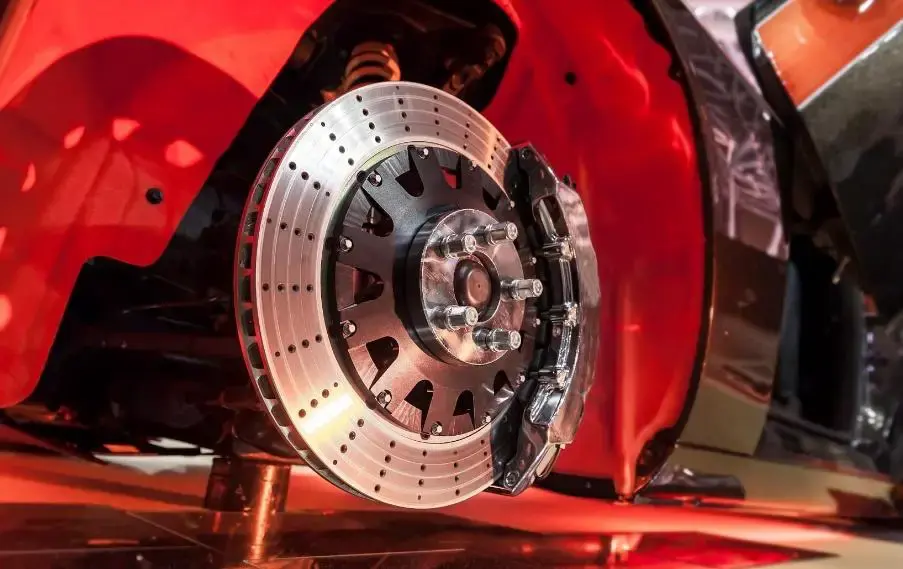
Squeaking or Squealing Noises
To know if it’s time to replace the pads, you can use your hearing. Keep in mind that a car can make noise when driving, especially when it comes to stopping.
Usually, when the brake pads are worn, they can cut into the brake disc, causing a metallic noise. If you hear the noise, call for service. If it turns out that they are no thicker than two mm, it is time to make changing brake pads , because that is the minimum acceptable value for the safe use of the vehicle.
Brake Pedal is Either Soft/Spongy or Hard/Resistant
When parking or stopping the vehicle, make sure that the brake pedal travel is the same as normal when the brake is applied. If the pads are worn, it will take longer than usual for the vehicle to stop. This may be a sign that it is time to replace the brake pads.
Note the Mileage
Another way to know when to change your brake pads is to watch the miles your car has traveled. It is recommended that these parts are serviced every 5,000 km to make sure everything is in order and there is no wear and tear.
In the case of used cars, caution should be doubled as in cars that have had 30,000 miles on their wheels, the brake pads should definitely be replaced.
It is important to know that if you use the car often, or it is used for long trips, maintenance should be done all the time.
How Long Does Brake Pad Replacement Take
Before brake pad replacement, check the brake fluid level. As the piston is pushed into the caliper housing, it will rise and the excess will leak out. It is more practical to remove the excess at once than to wash it out later.
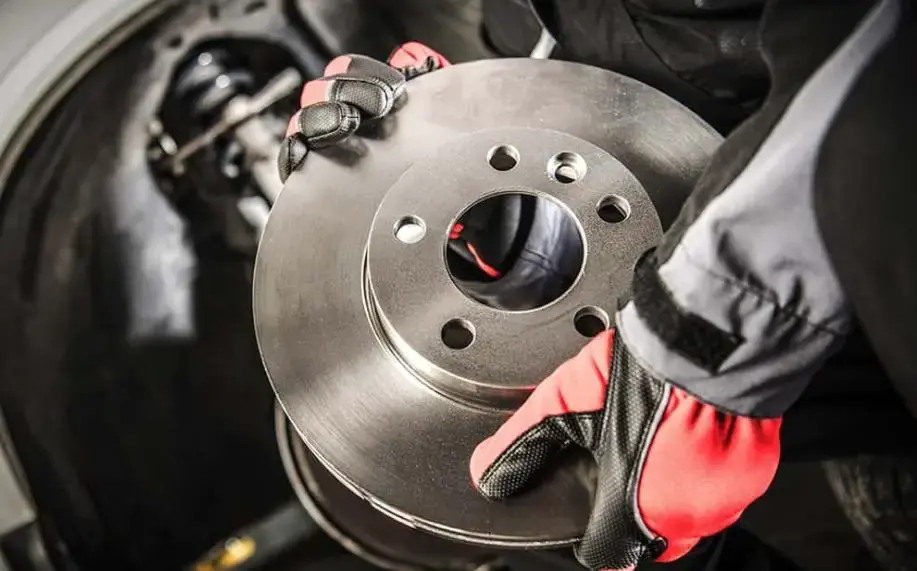
Then the wheels are removed and the condition of both the discs and the brakes themselves are evaluated. In case of uneven wear, the cause is eliminated.
On many modern cars, the parking brake is already electrically actuated. For such cars, before starting the work, a special device is connected to give the command to go into “ pad replacement mode“.
In the process of the brake pad replacement , all working surfaces are cleaned, all related accessories are replaced, and special lubricants are used.
In time, the service takes from 20 minutes to several hours, depending on the make or model of the car.
After the performance of technical works, we recommend making a running-in: from 50 to 200 km it is necessary to work with a brake pedal accurately without extraordinary and extreme braking.
Purely physically to replace brake pads can almost every car owner. But even for this seemingly simple procedure, you need knowledge and experience to diagnose the state of the brake pads themselves and everything related.
Brakes are an important safety factor, which you should not skimp on. We recommend that you contact a professional technician for replacing brake pads and rotors.
What is the Cost of a Brake Pad Replacement Job
Of course, the cost of a brake pad replacement depends a lot on the brand of car you’re driving, but you can assume that the cost for new brake pads will be between $150 and $300 per axle. If you need rotors as well, the brake job cost can go as high as $500 per axle.
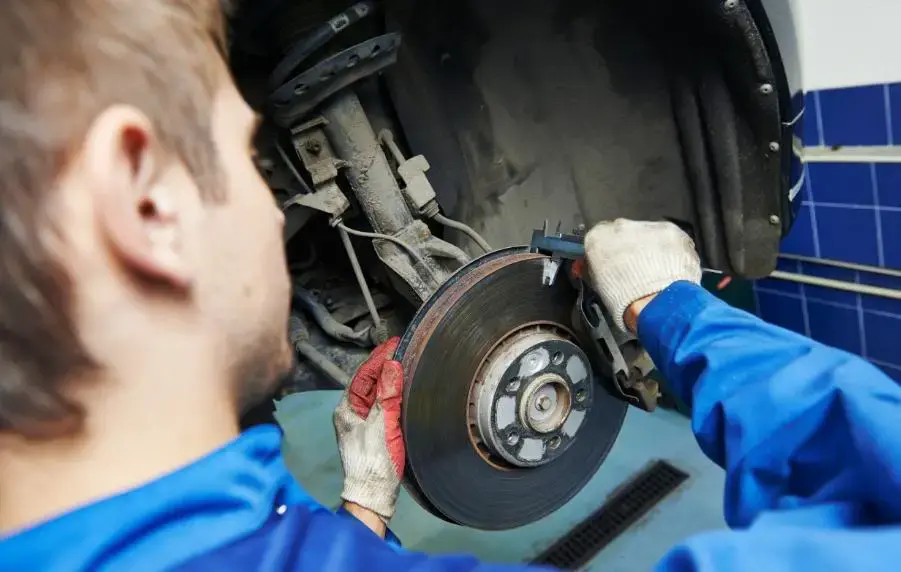
Fortunately, if you have your brake pads replaced regularly and at the right time, chances are that the rotors have not warped or deteriorated enough to need a complete replacement, and can withstand another set of brake pads.
Video: How Long Does It Take to Do Brakes
How long does it take to put new brakes on a car ? In this video, you can watch how to replace your brakes and rotors in the same amount of time it takes to drive to the auto shop.
Tips to Help Your Brake Pads Last Longer
Following the tips written below, you can help your brake pads last longer.
Proper Running-In of New Pads
Let’s say you’ve just replaced your brake pads. And you want them to last as long as possible. You can do this by doing a proper running-in on the first day.

Here’s how to do it:
Do not allow sharp and intermittent braking, so that the thin coating of the upper working layer of the pads is not overheated and damaged. It’s important to consider the type of pad material as well. The best options on the market are semi-metallic. They are durable, environmentally friendly, and minimize the load on the brake discs and drums.
Driving Without Hard Braking for the First 3-4 Days
Why is it necessary? To avoid overheating of the brake pads . It is important to “run” the first 250-300 thousand km carefully. It is important that the material of the new pads retained its properties, which will positively affect their life.
If you have installed special ceramic pads on a sports car, you can keep up with your usual driving style. They are designed for harsh working conditions – they are not afraid of overheating. However, such pads are an expensive treat for professionals.
Try to Drive Carefully
A relaxed driving style is the best protection against any problems with your car, including brake pads, drums, and discs.

It’s easy to drive carefully, so follow these tips:
Just a few days of careful driving and the new rules will become a habit.
Try to Brake With the Engine/Transmission
Engine braking is an advantage of manual cars. You should use it on long descents and in hilly terrain. The such maneuver will allow for slowing down the wear of pads in times. The maneuver is performed in downshifting.
If at 100 km / h include the 4th gear, then the speed is reduced to 80 km / h. If 3 or 2 gears are engaged, the speed will be reduced to 60 and 40 km/h respectively.
The braking system can be applied after the speed has decreased. But this maneuver is not suitable for cars with automatic transmission, where the benefits of gear braking are ineffective.
Always Keep Brake Discs Cool
Do not park a car with hot brakes, especially in urban environments where acceleration and deceleration cycles are repeated. Try to cool the pads in motion, this simple action will not take much time but will keep the element of the braking system from premature wear.
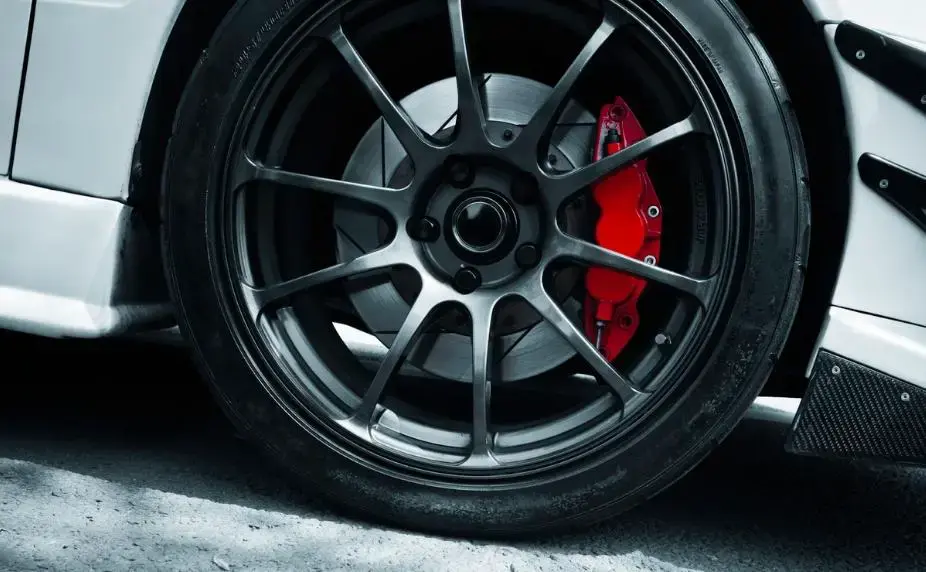
Here’s how to properly cool the pads:
Avoid Driving in Puddles and Mud
Hot brake pads and water are not a good combination. When water gets on overheated pads, the metal hardens. Temperature shocks of great force don’t do the pads any good – they wear out quickly due to multiple cracks and deformations, as well as changing geometry.
As you can see, it is not difficult to monitor the front and rear brake pads of the car. The main thing is to do it on a regular basis. After all, the prevention of malfunctions is much cheaper than major repairs and replacement parts.
Treat carefully the elements of the brake system of your car – and your visits to the car service will be limited to the planned maintenance without unforeseen expenditures.
Here is an information about how much does it cost to do a muffler delete.
Related posts
Cars
How Much Does It Cost to Do a Muffler Delete – Detailed Information
My Computer Screen is Shifted to the Right How Do I Fix It – Detailed Guide


